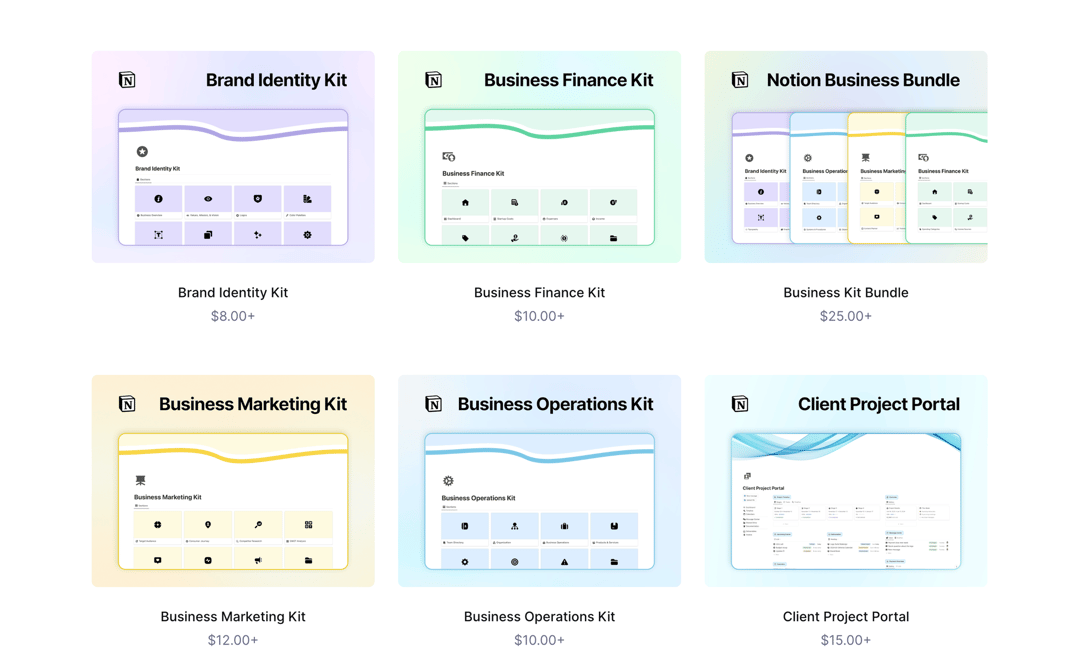Create once, reuse multiple times
Time is Money and that’s why you should always create templates for your designs. You create templates once and reuse them multiple times. This will facilitate swift production while ensuring brand consistency across various platforms and products.
Leveraging Visuals with Templates
The essence of efficient design lies in the utilization of templates. Consider a business that operates a Notion template store, for example. This business has standardized the visuals across its offerings by establishing templates that dictate structure, font, spacing, and color schemes. These templates are carefuly crafted in design platforms like Figma and Canva, tailored to be reused with minimal adjustments.

Example of high-quality notion store

Example of Learnxpedia box template for free offers
When a new product is conceptualized, the design process is drastically simplified. You select a pre-existing template, update the textual content, alter specific visual elements such as icons or device mockup, and promptly finalize a fresh design. This significantly cuts down design time from hours to just a few minutes.
Saving time while enhancing brand consistency
The primary advantage of using templates is the substantial time savings they offer. Templates eliminate the repetitive steps typically involved in creating designs from scratch. This efficiency is crucial for projects requiring rapid turnaround times, enabling you to deliver high-quality outputs faster than ever.
Brand Uniformity
Templates will serve you well with maintaining brand consistency. By defining and using a consistent set of design parameters, you ensure that all your communications reflect a coherent brand identity. This uniformity is a must for building a dependable and recognizable brand. A brand that effectively communicates its message to the target audience.
Implementing a Template-Based Design Strategy
To successfully integrate templates into your design process, follow these guidelines:
1. Define Key Design Elements: Identify and set your brand's visual standards, including colors, fonts, and logos. These elements should resonate with your brand’s identity.
2. Develop Comprehensive Templates: Construct versatile master templates that incorporate your brand’s design elements.
3. Keep Templates Current: Regularly review and update your templates to align with evolving brand guidelines and current design trends, keeping your visuals fresh and relevant.
Templates not only streamline the design process but also strengthen your brand identity across all outputs. By investing in a well-structured template system, you can achieve faster production times and maintain a strong, consistent brand presence in a competitive market.

